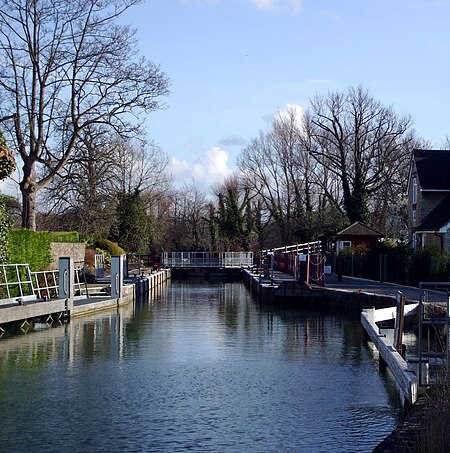Osney Lock

Osney Lock is a lock on the River Thames in Oxford, England, where the village or island of Osney is next to the river. The first lock was built of stone by Daniel Harris for the Thames Navigation Commission in 1790.Across the weir pool is a large Environment Agency complex which monitors the River Thames, while a small office building exists on the front lawn opposite from the lock house. The weir is upstream of the lock alongside the navigation channel in two parts and feeds the Osney pool. The Osney Lock Hydro hydro-electric plant occupies a building beside the weir. To the south and southwest are Osney Mill Marina and Osney Cemetery. Oxford railway station on the Botley Road is close by to the northwest.
Excerpt from the Wikipedia article Osney Lock (License: CC BY-SA 3.0, Authors, Images).Osney Lock
Millbank, Oxford City Centre
Geographical coordinates (GPS) Address Nearby Places Show on map
Geographical coordinates (GPS)
| Latitude | Longitude |
|---|---|
| N 51.74864 ° | E -1.27135 ° |
Address
Millbank
OX2 0HJ Oxford, City Centre
England, United Kingdom
Open on Google Maps









